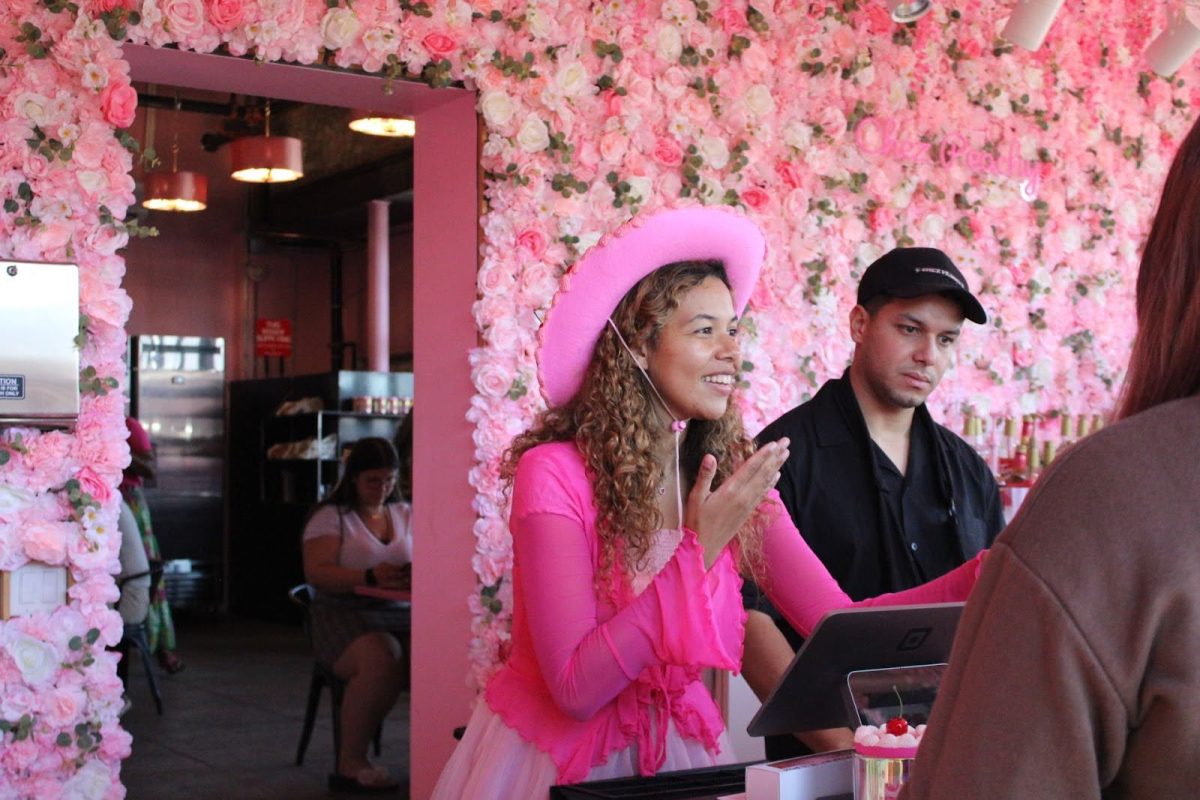Several UA officials and student representatives were acknowledged for their assistance in the Campus Recreation Center expansion process yesterday at the groundbreaking ceremony.
Among those recognized as student advocates during the course of expansion planning were Tommy Bruce, president of the Associated Students for the University of Arizona, and Erin Hertzog, former ASUA president.
The $27.5
The character is definitely a
departure from the existing building. It’s a breath of fresh air, and the students are really going to enjoy it.
-Juliette Moore
director, Student Recreation Center
million project, set to be completed in May 2009, is being funded by a $25 per-student fee the student body passed in November 2005. That fee is paying for the cost of the existing center and does not raise Campus Recreation costs to students.
When that debt is fully paid off in 2011, the fee will continue to be levied into 2040, but will instead fund the expansion, said Colleen Morgan, the project manager for the expansion.
“”The students have said they want this,”” she said. “”It’s nice to see this come out of the ground because of the students.””
Hertzog, who was unable to attend the event, was the original student advocate who helped corral the voice of the students by setting up outreach programs and student focus groups associated with the expansion, said Juliette Moore, director of the Student Recreation Center.
Following in Hertzog’s footsteps, Bruce continued to reach out to students and advocate the project for ASUA, Moore said.
Without the involvement of Bruce and Hertzog, the project would not have been possible, she added.
The expansion is an important step for student involvement in UA affairs and is reflective of the power of the student voice, Bruce said.
“”This is a wonderful, history-making event for the students,”” Moore said. “”It’s all about the students, so listening was the least we could do.””
The ceremony also paid a special tribute to Dick Roberts, the UA’s former assistant vice president and budget director, who died in September, Moore said. Roberts was a longtime advocate of student recognition in university matters and was instrumental in the arrangement of funding for the expansion.
“”He was always making sure students were being recognized and listened to,”” she said.
Construction is slated to begin in January, but before that happens, details and resolutions must be finalized within the construction documents to ensure production moves along smoothly, Morgan said.
“”We all know that there is still a lot of work to do,”” she said. “”(Constructing) a building is like running a marathon.””
Student involvement in the project has only heightened the anticipation of the center’s expansion, Bruce said.
“”People are really excited,”” he said. “”Everyone I have talked to has been positive.””
The only negative feelings seem to be coming from students who will be unable to take advantage of the expanded Rec Center in 2009, because of earlier graduation dates, Bruce said.
The expanded center will be focused on changing the attitude of the existing structure by theoretically eliminating long lines, introducing new areas and improving current equipment, Moore said.
“”The character is definitely a departure from the existing building,”” she said. “”It’s a breath of fresh air, and the students are really going to enjoy it.””








